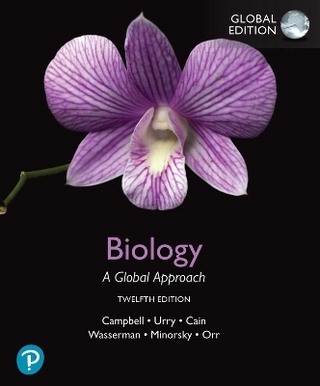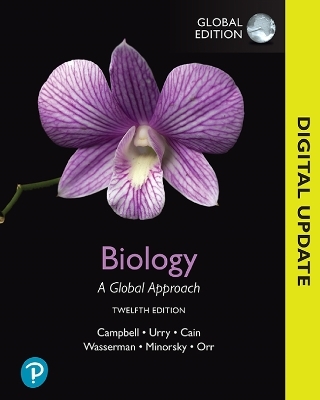
G Protein–Coupled Receptors as Drug Targets – Analysis of Activation and Constitutive Activity
Wiley-VCH Verlag GmbH (Hersteller)
978-3-527-60734-1 (ISBN)
- Keine Verlagsinformationen verfügbar
- Artikel merken
With its particular emphasis on the constitutive activity of G protein coupled receptors (GPCRs)s, this book comprehensively discusses an important biological process that has not yet been covered in such depth in any other existing books on GPCRs. The international team of highly distinguished authors addresses in detail current models and concepts, to introduce medicinal chemists, physiologists, pharmacologists, and medical researchers into the advances in the understanding of GPCR activation and constitutive activity. In addition, the book provides an overview on methods of investigating constitutive GPCR activity. The text is well illustrated by selected experimental data and schemes. The chaptes are all cross referenced with each other and cover general mechanisms, methodological approaches and cover selected important GPCR systems, the consequences for drug action, including, side effects, and rational drug design for GPCR targets.
A highly recommended reference for researchers in academia and industry, the authors address in detail current models and concepts, so as to introduce pharmaceutical chemists, physiologists and medical researchers to the advances in the understanding of GPCR activation and constitutive activity, and provides an overview of the methods of investigating GPCR activity. The text is backed by abundant case studies and methodological advice for analyzing GPCRs, covering selected pharmacologically relevant GPCR systems, the consequences for drug action, including unwanted side effects, and rational drug design for GPCR targets. This is a highly practical reference for researchers in academia and industry.
Roland Seifert was born in 1960 in Berlin, Germany. He was fellow of the Merit Scholar Foundation of Germany and earned his MD degree at the Free University of Berlin in 1986. From 1986 1995 he worked in the group of Professor Gunter Schultz in the Department of Pharmacology of the Free University of Berlin. From 1995 1998, he worked with Dr. Brian Kobilka at Stanford University, CA, USA. From 1998 2004 he was Associate Professor in the Department of Pharmacology and Toxicology of The University of Kansas, Lawrence, KS, USA before taking over the Chair of Pharmacology and Toxicology at The University of Regensburg, Germany. His research focuses on the molecular mechanisms of GPCR activation, G protein function and adenylyl cyclase regulation. Thomas Wieland was born in 1960 in Karlsruhe, Germany. He studied Pharmacy at the University of Heidelberg where he obtained his PhD in Pharmacology in 1989. From 1990 1996 he worked in the group of Professor Karl H. Jakobs in the Department of Pharmacology of the Universities of Heidelberg and Essen, Germany. From 1996 1997, he was a research fellow with Dr. Melvin I. Simon at the California Institute of Technology, Pasadena, CA, USA. From 1997 2002 he was Professor in the Department of Pharmacology and Toxicology of the University of Hamburg, Germany. Since July 2002 he is Professor of Pharmacology and Toxicology at the University of Heidelberg, Germany. His research focuses on the GPCR induced activation of heterotrimeric G proteins and monomeric GTPases and the regulation of these processes by accessory proteins.
Preface. A Personal Foreword. List of Contributors. Abbreviations and Terminology. I: General Concepts. 1. Historical Background and Introduction. 2. The Nature of Constitutive Activity and Inverse Agonism. 2.1 Historical Perspective. 2.2 Theoretical Basis of Inverse Agonism: Relevance of Receptor Type. 2.3 The Interaction of Systems with Ligands. 2.4 Inverse Agonism as a Phenotypic Behavior. 2.5 Conclusion. 3. Molecular Mechanisms of GPCR Activation. 3.1 Introduction. 3.2 GPCR Structure and Ligand Recognition. 3.3 Conformational Changes in the GPCR Activation Process. 3.4 Conversion to the Active Receptor State Involves Release of Stabilizing Intramolecular Interactions. 3.5 Kinetics of Agonist Binding and Receptor Activation. 3.6 GPCR Activation in an Oligomeric Context. 4. Molecular and Cellular Determinants of GPCR Splice Variant Constitutive Activity. 4.1 Introduction. 4.2 Constitutive Activation of Second Messenger Production by C Terminal Splice Variants of GPCRs. 4.3 Differential Constitutive Internalization of C t GPCR Splice Variants. 4.4 Conclusion. 5. Naturally Occurring Constitutively Active Receptors: Physiological and Pharmacological Implications. 5.1 Introduction. 5.2 Wild type Interspecies Homologues. 5.3 Wild type Receptor Subtypes within a Given Species. 5.4 Wild type Alternatively Spliced Receptors. 5.5 Polymorphisms in GPCRs. 5.6 GPCR Mutation induced Disease. 5.7 Future Challenges. 6. The Impact of G Proteins on Constitutive GPCR Activity. 6.1 Introduction. 6.2 The Contribution of G proteins to Constitutive Activity. 6.3 GPCR G Protein Fusion Proteins. 6.4 Conclusions. 7. (Patho)physiological and Therapeutic Relevance of Constitutive Activity and Inverse Agonism at G Protein Coupled Receptors. 7.1 Introduction. 7.2 Physiological Relevance of Constitutive Activity of GPCRs. 7.3 Constitutive Activity of GPCRs and Pathophysiology of Disease. 7.4 Physiological Relevance of Inverse Agonists. 7.5 Inverse Agonists as Drugs. 7.6 Conclusions. 8. Methodological Approaches. 8.1 Introduction. 8.2 Analysis of Constitutive GPCR Activity in Membranes and Intact Cells. 8.3 Measurement of Constitutive Activity of GPCRs in Intact Cells. II: Constitutive Activity of Selected GPCR Systems. 9. Constitutive Activity of b Adrenoceptors: Analysis in Membrane Systems. 9.1 Introduction. 9.2 Analysis of betaAR/Gs Protein Coupling in Membranes. 9.3 Development of the Concept that betaARs are Constitutively Active. 9.4 Probing Models of GPCR Activation with beta2ARwt and beta2ARCAM with Inverse Agonists. 9.5 Probing Models of GPCR Activation with beta2ARwt and beta2ARCAM and with Partial and Full Agonists. 9.6 Probing Models of GPCR Activation with beta2ARwt and Purine Nucleotides. 9.7 Constitutive Activity of the beta2AR Coupled to Various GALPHAs Proteins. 9.8 Probing Models of GPCR Activation with beta2AR Coupled to Various Classes of G proteins. 9.9 Comparison of the Constitutive Activities of the beta1AR and the beta2AR. 9.10 Conclusions. 10. Constitutive Activity of BETA Adrenoceptors: Analysis by Physiological Methods. 10.1 Introduction. 10.2 Constitutive Activity and Inverse Agonism: Definition and Detection. 10.3 beta1 Adrenoceptors. 10.4 beta2 Adrenoceptors. 10.5 Homo and Heterodimerization of beta1 and beta2ARs. 10.6 Conclusions. 11. Constitutive Activity at the alpha1 Adrenoceptors: Past and Future Implications. 11.1 Introduction. 11.2 Theoretical and Experimental Approaches for Study of Constitutive GPCR Activity. 11.3 Constitutively Activating Mutations of the alpha1AR Subtypes. 11.4 A Putative Model of Receptor Activation for the alpha1BAR. 11.5 Constitutive Activity of Wild type alpha1ARs and Inverse Agonism. 11.6 Receptor Regulation and Constitutive Activity of the alpha1ARs. 11.7 Conclusions. 12. Constitutive Activity of Muscarinic Acetylcholine Receptors: Implications for Receptor Activation and Physiological Relevance. 12.1 Introduction. 12.2 Constitutive Activity Native Systems. 12.3 Constitutive Activity Recombinant Systems. 12.4 Constitutive Activation by G Proteins. 12.5 Structure Function Analysis of Receptor Activation. 12.6 Structure Function Model for Activation. 12.7 Conclusions. 13. Constitutively Active Histamine Receptors. 13.1 Introduction. 13.2 The Histamine Receptors. 13.3 Assay Systems for Detection of Constitutive Activity of Histamine Receptors. 13.4 Conclusions. 14. Constitutively Active Serotonin Receptors. 14.1 Introduction. 14.2 5 HT1A Receptor (5 HT1AR). 14.3 5 HT1B and 5 HT1D Receptors (5 HT1BR and 5 HT1DR). 14.4 5 HT2A Receptor (5 HT2AR). 14.5 5 HT2C Receptor (5 HT2CR). 14.6 Conclusion. 15. Virally Encoded Constitutively Active Chemokine Receptors. 15.1 Introduction. 15.2 The Human Cytomegalovirus encoded Chemokine Receptor Homologue pUS28. 15.3 The Human Kaposi's Sarcoma Virus encoded Chemokine Receptor KSHV GPCR. 15.4 Conclusions. Index.
| Erscheint lt. Verlag | 25.4.2006 |
|---|---|
| Verlagsort | Weinheim |
| Sprache | englisch |
| Gewicht | 10 g |
| Themenwelt | Naturwissenschaften ► Biologie |
| Naturwissenschaften ► Chemie | |
| ISBN-10 | 3-527-60734-X / 352760734X |
| ISBN-13 | 978-3-527-60734-1 / 9783527607341 |
| Zustand | Neuware |
| Haben Sie eine Frage zum Produkt? |
aus dem Bereich

